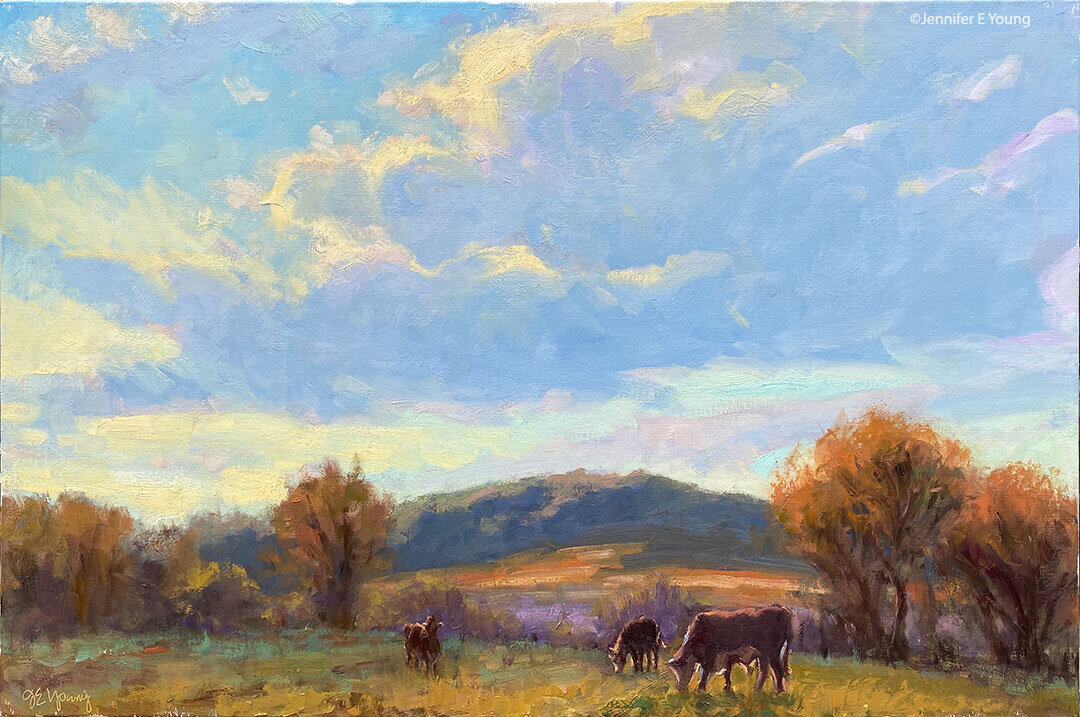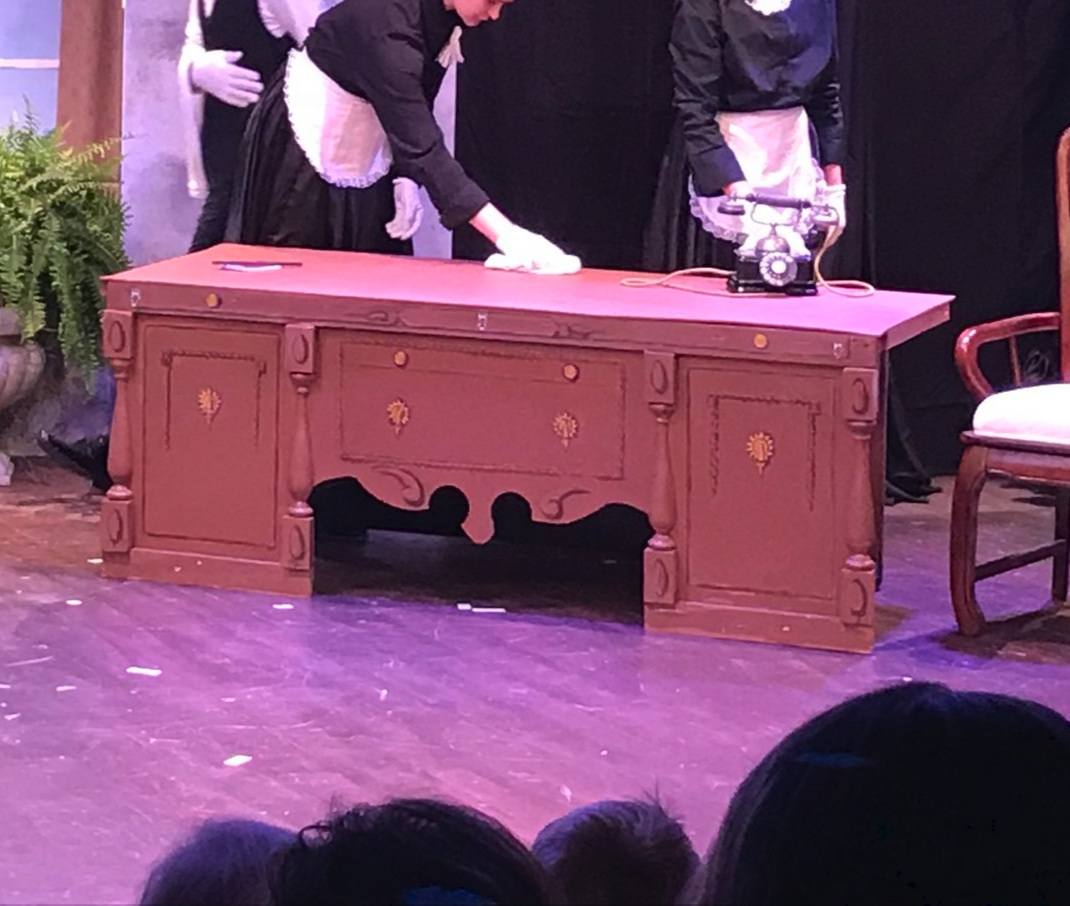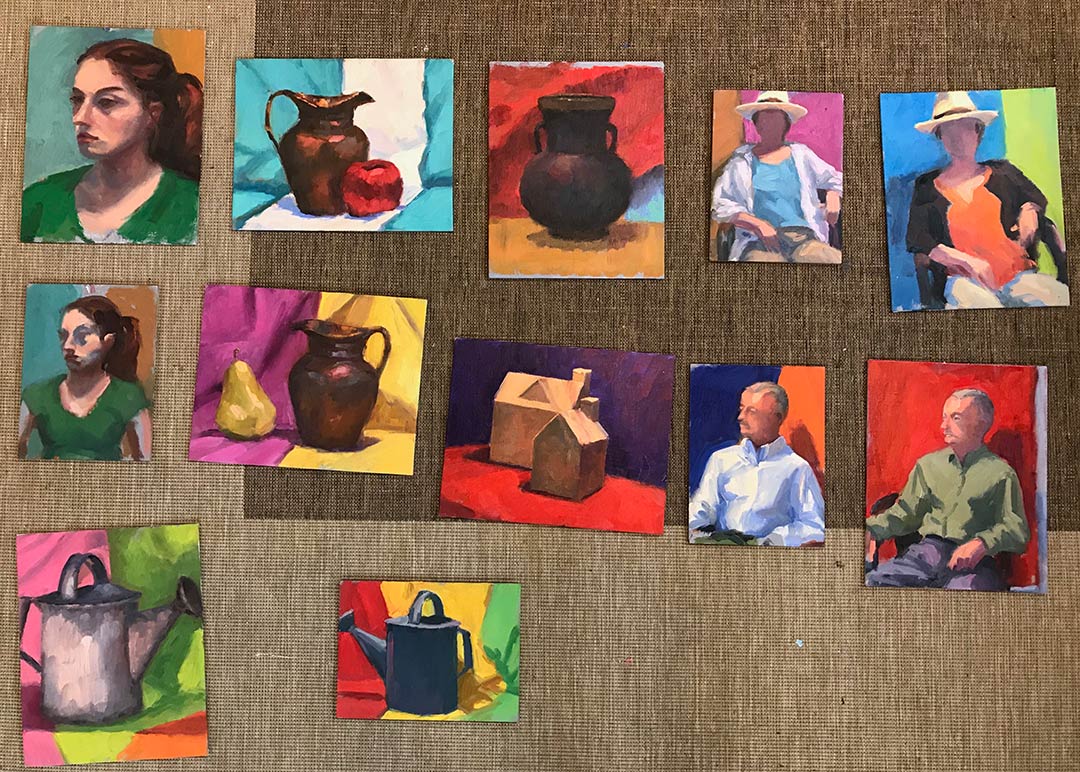Plein air painting tip- protecting your hands.
/I'm heading out this morning to do a little plein air painting, so for now I'll post a plein air painting tip. This was a question posed to me by a fellow artist from Texas. My answer follows: Hi Jennifer,
Came upon your site from a demo you have at EmptyEasel.com. I have a dumb question butcouldn't find an answer on your site. You use a blue glove whilepainting in some ofthe photos. Could you give me the brand name anddo you use them in pleinair? Seems like the ones I am getting do notlast through a paintingsession. -G.K. in Texas
Answer: Hi G.K. -
Your question isn't dumb at all. I still have a box of 200 white latex gloves collecting dust because they broke down so easily with oil paints and solvents. What I'm using now are called nitrile gloves. They're thin and disposable, but hold up well to solvents. I find if I'm not too messy I can reuse them for another session.
I get the blue ones you've seen in some of my photos at Lowe's or Home Depot in the painting section. I know for sure that Lowe's has them. You might try them out by getting a small pack locally, and then if you like them, you could probably find a better price online, especially if you buy larger quantities. (I also found a great deal on them at Costco, and they were gray, not blue. At Costco they're called "Nitrile Examination Gloves". I don't have large hands, but to be safe, I bought the medium size and I'm glad I did. They fit perfectly--not too tight, not too loose).
As for plein air painting, I use the gloves when I think to pack them! Sometimes though they can be a little much when it's 85-90+ degrees outside. In that case I just can't bear them, as they do make your hands "sweat" in the heat. But wear them if you can stand it. It's really not a good idea to expose your skin to daily paint and solvents.
Here's another idea I learned from fellow plein air painter Mary Pettis, who in turn learned it from painter Jim Wilcox. Dentist's bibs! If you can find them, that is. They have the paper towel properties on one side, and a plastic lining on the other side, so the solvents don't get through to your hands. I have yet to check out our local medical supply place, but intend to do so soon so I can give it a try. Apparently works great, and no sweaty hands en plein air!














